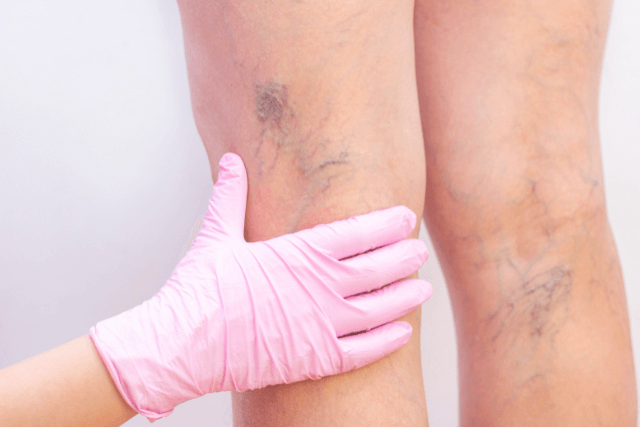Many people dream of a healthier, more sculpted body. They often begin with diet, exercise, and lifestyle changes. However, even with dedication, some areas of the body may still not respond. This is where combining cosmetic procedures and weight loss can make a dramatic difference. When used together, these treatments can help you shed unwanted weight while improving body shape, skin texture, and facial appearance.
In Tampa and other cities across the United States, there is a growing trend of blending medical weight loss programs with cosmetic enhancements. This approach does more than improve appearance — it can boost self-esteem, enhance comfort, and inspire long-term health habits.
In this guide, we will explore how cosmetic procedures and weight loss work together, the benefits of combining them, and the most popular treatment options available today. We will also share tips for choosing the right sequence of treatments and setting realistic expectations.
Why Combining Treatments Works
The idea of pairing cosmetic procedures and weight loss is not just about vanity. It is about creating harmony between how your body feels and how it looks.
When you lose weight, your body becomes healthier, but the skin and underlying tissues may not shrink back evenly. This can lead to sagging skin or stubborn fat pockets that resist diet and exercise. Cosmetic procedures can address these concerns directly.
The main benefits of combining treatments include:
- Balanced results – Weight loss improves health, while cosmetic procedures refine appearance.
- Motivation to maintain results – When people see visible improvements, they are more likely to stick to healthy habits.
- Time efficiency – Some treatments can be scheduled in a way that supports both weight loss and cosmetic goals.
By integrating the two, patients achieve not only a slimmer figure but also smoother contours, firmer skin, and a rejuvenated face.
Popular Medical Weight Loss Options
Medical weight loss programs are designed to help people lose weight safely under the guidance of healthcare providers. These programs often include a combination of nutrition plans, activity recommendations, behavioral therapy, and medications.
Some of the most effective options include:
Prescription Medications
Medications such as semaglutide and tirzepatide are FDA-approved for weight management. They work by targeting hormones that control appetite, leading to reduced hunger and slower digestion. Many Tampa clinics now offer these medications as part of supervised programs.
Lifestyle and Nutrition Counseling
Structured eating plans designed by registered dietitians can help patients avoid fad diets and adopt sustainable habits. These plans are personalized to each patient’s medical history and lifestyle.
Bariatric Surgery
For individuals with significant obesity, procedures like gastric sleeve or gastric bypass can lead to substantial and lasting weight loss. Surgery is typically recommended when other options have not been effective.
Cosmetic Procedures to Complement Weight Loss
After weight loss, the body may need additional help to achieve the desired shape. This is where cosmetic procedures become important. The most popular treatments include body contouring, skin tightening, and facial rejuvenation.
Body Contouring
Body contouring involves surgical and non-surgical techniques that remove excess fat and reshape the body. Options include:
- Liposuction to remove stubborn fat pockets.
- Tummy tuck to tighten abdominal muscles and remove loose skin.
- Arm lift or thigh lift for improved limb definition.
Skin Tightening
After losing weight, the skin may lose elasticity. Non-invasive treatments such as radiofrequency and ultrasound therapy stimulate collagen production to firm and lift the skin. These treatments work well for mild to moderate skin laxity.
Facial Rejuvenation
Weight loss can sometimes make facial features appear older due to reduced volume in the cheeks and temples. Facial rejuvenation procedures like Botox, dermal fillers, and laser resurfacing restore a youthful, refreshed appearance.
Choosing the Right Sequence
One common question is whether to complete weight loss before starting cosmetic procedures. In most cases, healthcare providers recommend achieving a stable weight before undergoing major body contouring or skin tightening treatments. This ensures that results are more predictable and longer-lasting.
However, some non-invasive treatments can be started earlier to maintain skin health during weight loss. For example, mild skin tightening treatments can help stimulate collagen while you are still losing weight.
Realistic Expectations and Safety
Combining cosmetic procedures and weight loss can be life-changing, but it is important to have realistic expectations.
- Results vary depending on age, skin elasticity, and overall health.
- Recovery times can differ between procedures.
- Long-term success depends on maintaining a healthy lifestyle.
Always work with board-certified providers who specialize in both medical weight loss and cosmetic procedures. They can create a safe and effective plan tailored to your needs.
Success Stories: Combining Cosmetic Procedures and Weight Loss Treatments
Many Tampa residents have experienced dramatic transformations through combined treatments. Patients who once struggled with obesity have achieved not only a healthy weight but also a firm, toned appearance. Others have improved their skin and facial features after significant weight loss, regaining confidence in both professional and social settings.
Conclusion: Combining Cosmetic Procedures and Weight Loss Treatments
Cosmetic procedures and weight loss are powerful tools when combined strategically. They address both health and appearance, helping people achieve total body transformation. By working with skilled professionals, setting realistic goals, and maintaining healthy habits, you can enjoy results that last for years.



